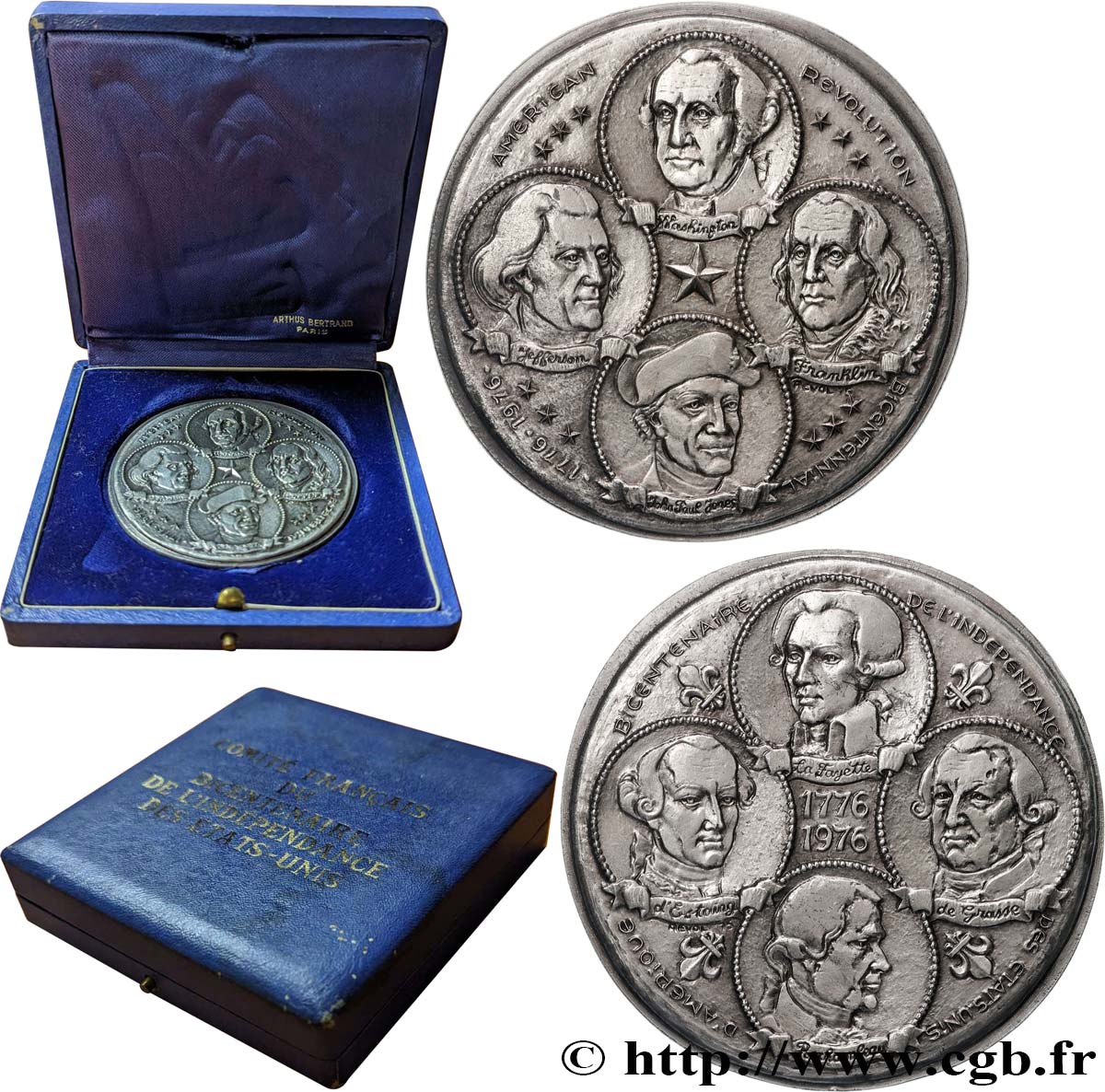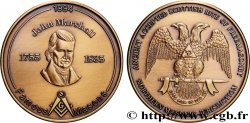fme_881105 - UNITED STATES OF AMERICA Médaille, Bicentenaire de l’indépendance des Etats-Unis
100.00 €(Approx. 107.00$ | 86.00£)
Quantity
Add to your cart

Type : Médaille, Bicentenaire de l’indépendance des Etats-Unis
Date: 1976
Mint name / Town : Monnaie de Paris
Metal : silver plated bronze
Diameter : 71 mm
Orientation dies : 12 h.
Engraver REVOL Guy-Charles (1912-1991)
Weight : 146,01 g.
Edge : lisse + triangle
Puncheon : Triangle
Coments on the condition:
Patine grise hétérogène, présentant quelques marques d’usure. présence de quelques rayures
Obverse
Obverse legend : BICENTENAIRE - DE L’INDEPENDANCE - DES ETATS-UNIS - D’AMERIQUE // LA FAYETTE / 1776 / 1976 / D’ESTAING - DE GRASSE / ROCHAMBEAU.
Obverse description : Bustes de La Fayette, d’Estaing, de Grasse et Rochambeau, de profil, dans des médaillons. Signé : REVOL 75.
Reverse
Reverse legend : AMERICAN - REVOLUTION - BICENTENNIAL - 1776-1976 // WASHINGTON / JEFFERSON - FRANKLIN / JOHN PAUL JONES.
Reverse description : Bustes des présidents américains Washington, Franklin, Jefferson et John Paul Jones dans des médailles. Signé : REVOL 75.
Commentary
La médaille est conservée dans un écrin bleu timbré d’une légende en lettres argentées : COMITE FRANCAIS / DU / BICENTENAIRE / DE L’INDEPENDANCE / DES ETATS-UNIS.








 Report a mistake
Report a mistake Print the page
Print the page Share my selection
Share my selection Ask a question
Ask a question Consign / sell
Consign / sell
 Full data
Full data



